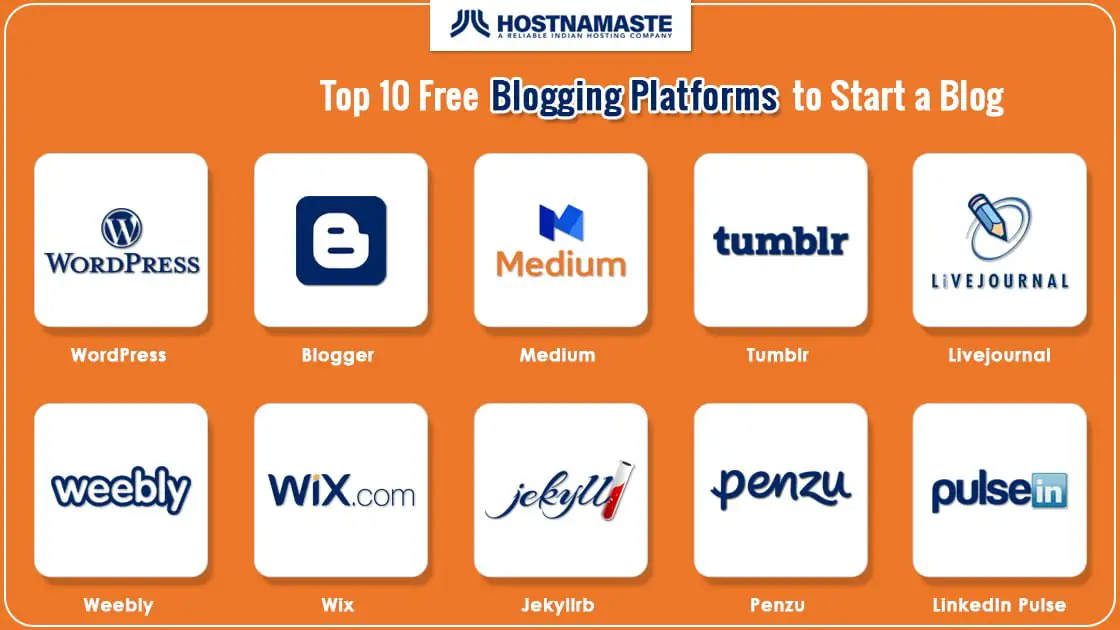8 Popular Blogging Platforms


Bloggers can choose the blogging mode themselves. If the blog needs to be different, look different in design and provide specific functions, then it is developed as a website. If it is more important for the author to upload new posts and manage publications easily, specialized blogging platforms will be used. These are called blogging platforms or blog management services. Prospects of Internet blogs in education 55 Below are presented some of the most popular blogging platforms (“14 Best Free Blogging Platforms…”), based on their popularity, visitor statistics and functional opportunities.
1. Wix (https://ru.wix.com) – Here, there are about 500 creative templates; Lots of additional features and apps and great hosting can be found here too. This resource provides users with 500MB of storage, 1GB of bandwidth, and a free Wix account. There is also a premium plan option.
2. Yola (https://yola.com) – Yola’s free plan offers a modest two sites and three web pages, but also 1GB of storage and bandwidth. It is easy to use; The resource offers users dozens of customizable design templates, a website builder, customizable flexible layouts, and drag-and-drop functions.
3. Jekyll (http://www.jekyllrb.com) – Jekyll is described as a static site generator, destined for blog creation. The developer team calls it “blog aware” because users create their content as text files (Markdown), and then put them into folders. This means that writing blog posts is equivalent to managing text folders on one’s PC, which must be named according to a specific format. Jekyll then suggests a variety of Liquid-enhanced HTML templates that resource users add to their content. Users get a website relying on static assets and ready to upload to any server. Customers can then host their projects on GitHub’s servers for free. This gem can be installed on most systems: MacOS, Ubuntu Linux, Windows, and can be upgraded over time.
4. WordPress (http://www.creativebloq.com/tag/wordpress) – WordPress is open source software that can be used to create websites, blogs, complex portals, enterprise websites or applications. WordPress features utility for average customers and sophistication for experienced developers. WordPress claims that more than 30% of web usage is powered by WordPress. Here users will find more than 40 000 plugins for specific needs: online store, gallery, mailing list, forum, analytics, etc. WordPress is a vibrant community that hosts monthly meetups in 436 cities around the world.
5. Tumblr (https://www.tumblr.com) – Tumblr covers both blogging and social networking functionality, so it could be argued that it’s somewhere between WordPress and Twitter. As a blogging alternative, Tumblr is a microblogging platform that allows following other blogs, reblogging, sharing, and more. Tumblr users find it easy to quickly post videos, GIFs, images, and audio formats. Users can connect their blogs to their Twitter and Facebook pages. It’s free and very easy to use.
6. Blogger (http://blogger.com) – This is a blog-publishing service. This platform is run by Google since 2003. Blogger provides basic blogging experience to its users. Blogger offers a modest number of templates to use, where one can modify the colors and layout using the built-in tools, but one cannot create one’s own layout. Blogger is backed by Google’s strong security platform.
7. Medium (http://medium.com) – Medium is a socially-oriented space that promotes writing, organized into several predefined sections. The platform focuses on people, quality, original ideas, clean reading experience, engagement and depth as well as perspective rather than advertisers, volume, sponsored content, pop ups and banners, clickbait and pageviews. Medium offers a paid subscription for $50/year or $5/month.
8. LiveJournal (http://livejournal.com) – LiveJournal is a community publishing platform that combines the features of blogging and social networking. LiveJournal welcomes creative individuals, and promotes community interaction and personal expression due to its user-friendly interface and customizable journal. There are over 50 million journals organized around topics like politics, entertainment, fashion, literature and design etc.
Read Also:
- Complete Blogging Guide for Beginners
- The Essential Guide To Blogging
- 20 Blogging Resources To Help You Scale
- Blogging Domain and Hosting
- Blogging and Uses of Blogs in Libraries
Recent Posts
Exploring The World Of Open-Source Software
Open-source software is a movement that began in the software industry in the 1980s. Its…
Exploring Basic WordPress Concepts
Blogging gives regular, non-technical Internet users the ability to publish content on the World Wide…
9 Reasons You Should Participate In A Blogging Challenge
1. Blogging can be a solitary activity at times. It can feel like you’re calling…
What Does Evernote Have To Do With My Website
Once your website is set up, you'll need to create a constant stream of content…
Publishing Your Content
After all the hard work of setting up your business blog, it now comes down…
Top 10 WordPress Security Tips
You install WordPress, add a post, page, theme and adjust widgets… now it’s time to…


